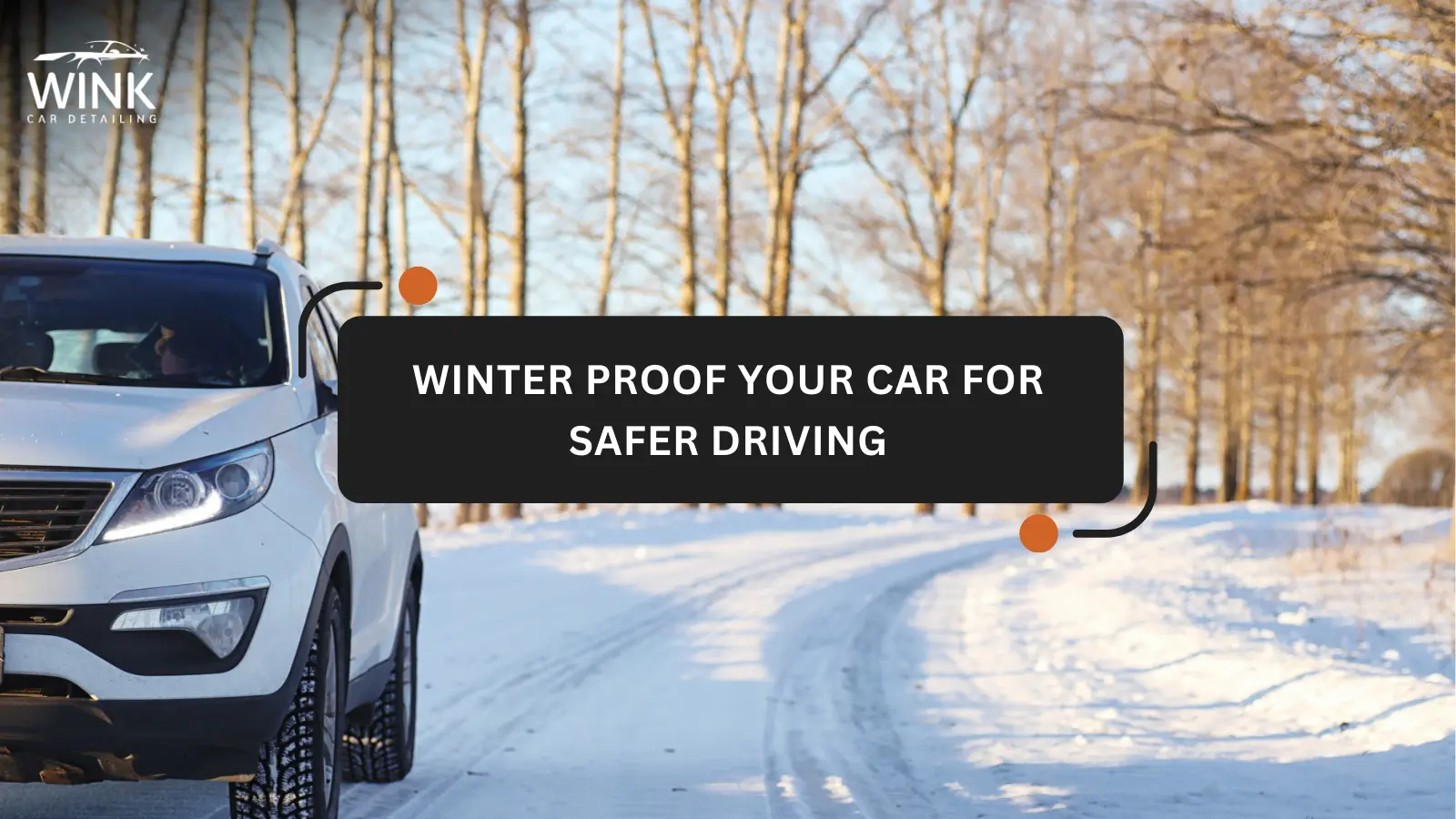Winter Proof Your Car for Safer Driving
Winter brings snow, ice, and freezing temperatures that can make driving more challenging and dangerous. If you live in an area with harsh winters, getting your car ready before the first frost is essential. Proper preparation can help keep you safe, protect your car, and reduce the chance of unexpected breakdowns.
Cold weather can wear down certain parts of your car, especially those exposed to road salt, ice, and debris. By addressing potential problems early, you can prevent costly damage and ensure your vehicle is ready to handle winter conditions.
How to Prepare Your Car for Winter
Here’s a simple checklist to help you get your car winter ready. These steps cover the most important areas to inspect and prepare for a safe driving experience during the colder months.
1. Check and Top Off Fluids
Your car relies on various fluids to run smoothly. In winter, these fluids must be topped up and suited to cold temperatures.
- Engine oil: Consider using winter grade oil for better performance in freezing weather.
- Antifreeze: Ensure the coolant system has the right antifreeze mixture to prevent freezing.
- Windshield washer fluid: Use a winter specific fluid that won’t freeze on your windshield.
- Brake fluid: Inspect and refill as needed.
- Fuel: Keep your gas tank at least half full to prevent condensation and freezing in the fuel lines.
2. Inspect Your Tires
Good tires are essential for traction on icy or snowy roads.
- Snow tires: If you live in a region with heavy snowfall, invest in snow tires for better grip.
- Tire pressure: Cold weather reduces tire pressure, so check and inflate them regularly.
- Tread depth: Make sure your tires have enough tread to handle slippery roads.
3. Test the Brakes
Your brakes are your first line of defense in hazardous conditions. Test them to ensure they respond quickly and smoothly. If you hear any unusual noises, have them inspected by a professional.
4. Check the Heating System
Your car’s heater is vital for keeping you warm and maintaining clear windows. Make sure the heating system works properly before the temperatures drop.
5. Inspect the Battery
Winter demands more power from your car battery to run heaters, lights, and other electrical components.
- Check the battery’s charge level.
- Ensure the terminals are clean and secure.
- Replace the battery if it’s nearing the end of its lifespan.
Pay Attention to Critical Exterior Components
Certain exterior parts of your car require extra care in winter. Let’s explore some key areas:
1. Windshield and Wipers
Your windshield needs to be clear to maintain good visibility during snowstorms.
- Clean your windshield thoroughly to remove streaks and dirt.
- Inspect the wipers for cracks or wear. Replace them if needed.
- Consider installing winter specific wipers for better performance.
2. Lights
Functional lights are crucial for driving safely in low visibility conditions.
- Clean the headlights, taillights, brake lights, and hazard lights to remove foggy residue.
- Replace any burnt out bulbs.
- Ensure the lights are bright enough to illuminate dark or snowy roads.
3. Paint Protection
Road salt can damage your car’s paint and cause rust.
- Wash your car regularly to remove salt and debris.
- Apply a protective wax coating to shield the paint from the elements.
Special Considerations for Winter Driving
Winter driving requires more than just preparing your car’s basics. Here are some additional areas to address:
1. Antifreeze Maintenance
Antifreeze prevents your engine from freezing and helps it run smoothly in cold weather.
- Check the coolant system for leaks or cracks.
- Flush and replace the antifreeze if it’s old or contaminated.
2. Emergency Supplies
Always keep an emergency kit in your car during winter. Include items like:
A flashlight and extra batteries.
Warm blankets and clothing.
Non perishable snacks and bottled water.
Jumper cables and a portable battery charger.
A shovel and ice scraper.
3. Spark Plug Wires
Cold weather can affect spark plug wires, causing misfires. Inspect them for wear or cracks and replace them if needed.
Preventive Measures for a Trouble Free Winter
The saying "prevention is better than cure" applies perfectly to winter car maintenance. Taking a proactive approach can save you time, money, and headaches.
1. Regular Maintenance
Schedule a thorough inspection of your car before winter starts. A mechanic can identify and fix issues you might miss.
2. Keep It Clean
Washing your car regularly helps prevent rust and corrosion caused by road salt. Pay special attention to the undercarriage.
3. Protect the Undercarriage
Use an undercarriage sealant or rust proofing spray to protect metal parts from road salt and moisture.
Stay Safe and Prepared
Even with the best preparation, winter driving can still be tricky. Always drive cautiously, and adjust your speed based on road conditions. Keep a safe distance from other vehicles to allow for longer stopping times on icy roads.
By following this guide, you can minimize risks and enjoy a safer, smoother driving experience throughout the winter season.
Stay prepared and stay safe this winter!





